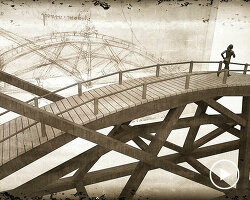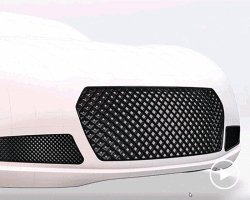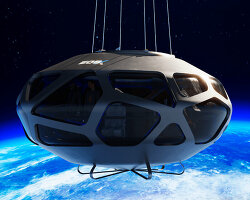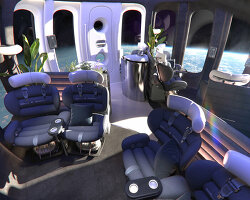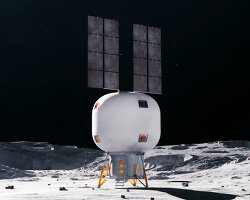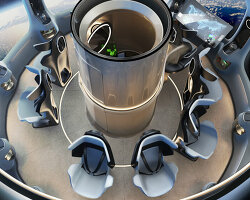Interstellar shoots for the moon, mars, and more
Interstellar Lab is on a mission to build a future full of life on Earth, Mars, and beyond through sustainable design, engineering, and agronomy. Single BioPods as well as large, modular village-like communities are set to land on our planet and in space in the near future. These self-sustainable creations are environmentally-controlled, closed-loop modules, able to create ideal conditions for plants to grow efficiently everywhere, and offer the possibilities to expand in number.
The innovative designs of Interstellar Lab might seem like a moonshot, but the projects are materializing on Earth as they just released their first BioPod, with the help of Dassault Systemes 3DEXPERIENCE platform on the cloud. Jim Rhoné, Chief Product Officer at Interstellar Lab, talks to designboom to delve into the forward-thinking company and its extraterrestrial work.
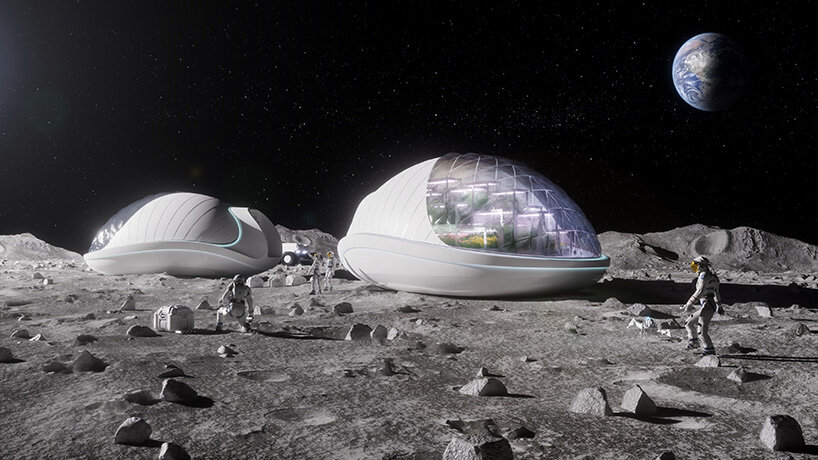
All images courtesy of Interstellar Lab
designing for earth first, space soon
The sustainable growing systems by Interstellar Lab aim to better life on Earth, allowing durable farming while preserving its biodiversity, and then prepare humanity to settle on other planets. The work is a fusion of architecture, agronomy, engineering, product design, and life-sciences. And, as such, it demands a highly skilled team. Installed in Ivry-Sur-Seine, the French-American startup has harnessed talents and expertise from NASA, Space X, Trimble, Airbus, and Dassault Systemes, including scientists, engineers, and architects like Jim Rhoné.
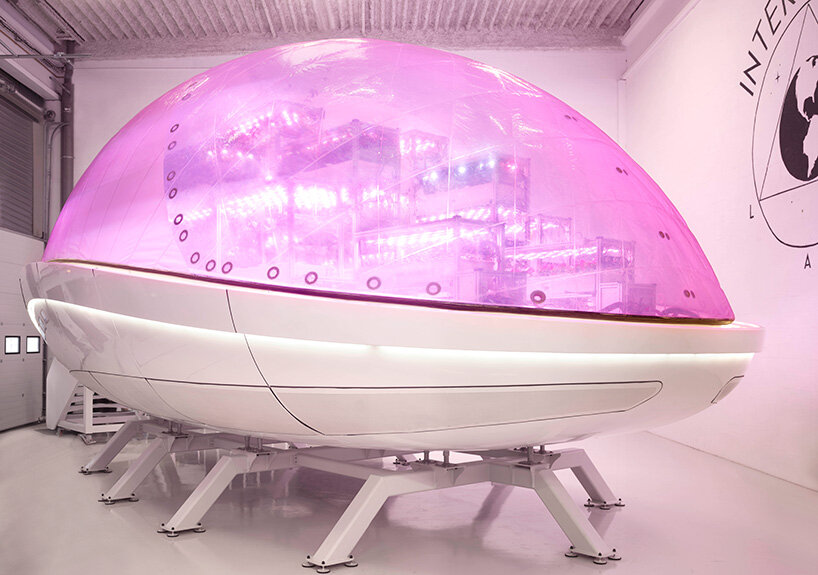
interstellar lab’s ebios concept
Interstellar Lab launched the mini extraterrestrial cities, called Experimental Bio-Regenerative stations (Ebios), as their first project in 2018. The concept houses all infrastructure and resources needed to support as well as sustain human life on another planet. These could be composed of independent modules or combined for a complete self-sufficient unit. The stations produce and recycle almost everything needed, from water to air and food.
‘Interstellar Lab’s founding mission was to create a system of stations that can anticipate the life of astronauts in space, like analogs. The original idea combined many different topics: infrastructure, habitats, waste management facilities, food supply, plant science, and more. It is not solely about space but also future management, space exploration, and transport,’ explains Jim Rhoné, Chief Product Officer at Interstellar Lab.
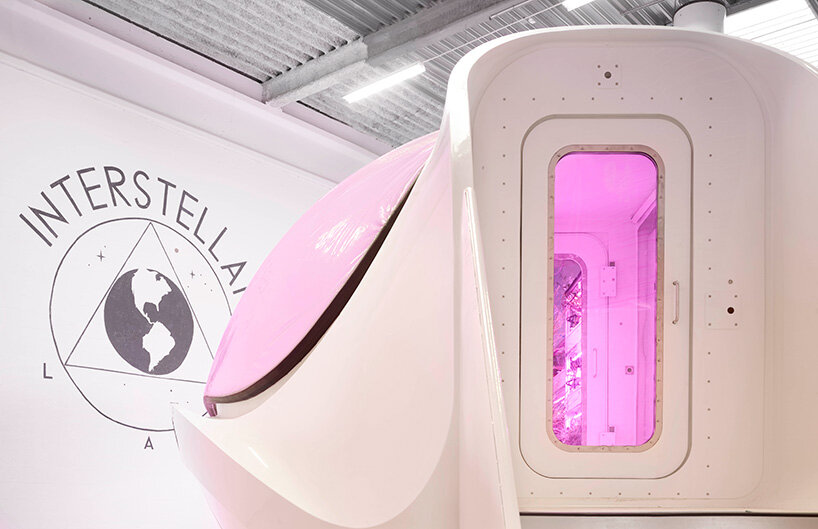
‘We challenged ourselves to focus on one important topic from Ebios that had not been tackled by other actors – the growing of crops to sustain life for humanity. We set about designing a product to grow crops very efficiently, comparing the quality, yield and impact with energy use,’ adds Jim.
This product is the self-sustaining food production system called BioPod. Built to withstand extreme climates, the modules aspire to land on other planets in few years after a complete refit, but, importantly, can be highly beneficial across our globe too. The architecture reduces land and water needed to produce food on Earth by more than 99%. Specific environmental conditions are realized to grow a diverse array of crops and plants. Predictive maintenance is then used to achieve to achieve high-precision agriculture.
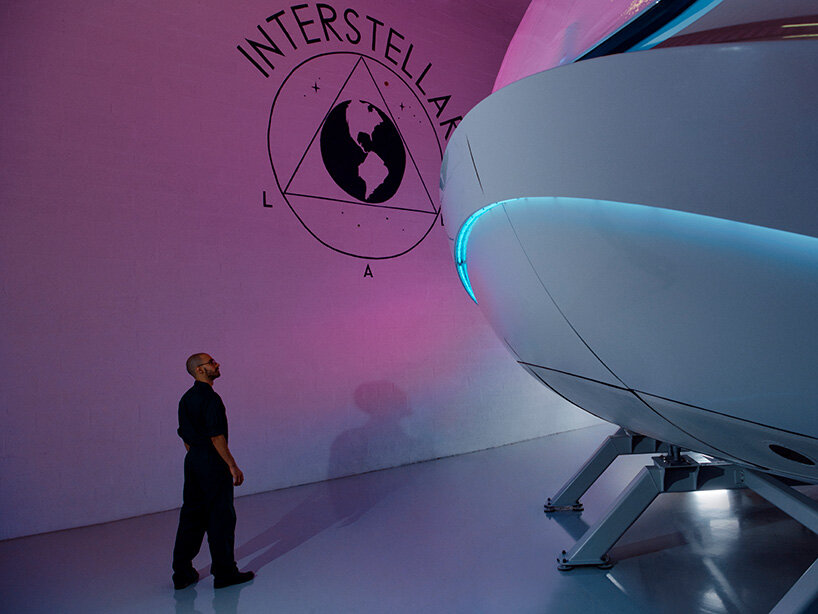
interstellar lab enhances dassault systemes for Biopod
Dassault Systemes was brought in to support the growth and scalability of the Interstellar Lab and its products. The 3DEXPERIENCE platform on the cloud offers a one-stop platform for a whole project, from ideation and design to development, validation, and manufacturing. Team members can access and collaborate remotely, from Paris, Los Angeles or wherever an internet connected is received.
‘I already understood the benefits and possibilities of Dassault Systemes from my previous experience at Trimble Consulting (previously Gehry Technologies). When I joined Interstellar Lab, I ensured the BioPod was designed entirely using the 3DEXPERIENCE platform, from the early ideation to manufacturing stage. It is a secure and cohesive platform for all processes, it increases productivity, and enables exchange of expertise and collaborations with other participants, suppliers and stakeholders. Changes to the design can be made based on this feedback loop, synchronized and as a unique source of truth on the platform,’ mentions the Chief Product Officer.
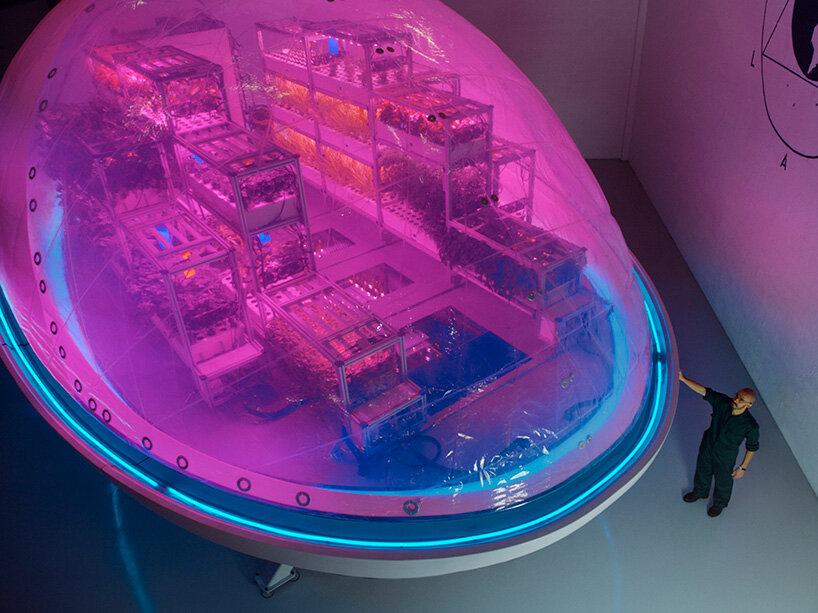
The structures of the BioPods are fabricated using a combination of composites for the solid base and soft, resistant polymers for the inflatable membrane. The form for this cocoon-like structure was carefully engineered and affirmed form follows function. The possibilities of condensation needed to be minimized inside, the temperature, lighting and relative humidity precisely controlled as the environment of the pods is closely monitored to maximize crop production. On top of this performance need, manufacturing restraints were also key and led to late design changes during the product development. Dassault Systemes’ built-in Generative Design tool made possible these quick back and forth and adaptation to fit both performance and manufacturing parameters.
‘We used xGenerative Design as the main tool when starting the BioPod project. It enabled us to make a lot of iterations on the actual envelope shape, dimensions, and volume. The base had to be solid and double curved, but we knew the geometry would be changed depending on feedback from our manufacturers. This meant we started talking to stakeholders earlier in the process, understanding their needs, and enhancing their expertise. We pushed these details through generative design and was then able to lock in the geometry,’ says Jim.
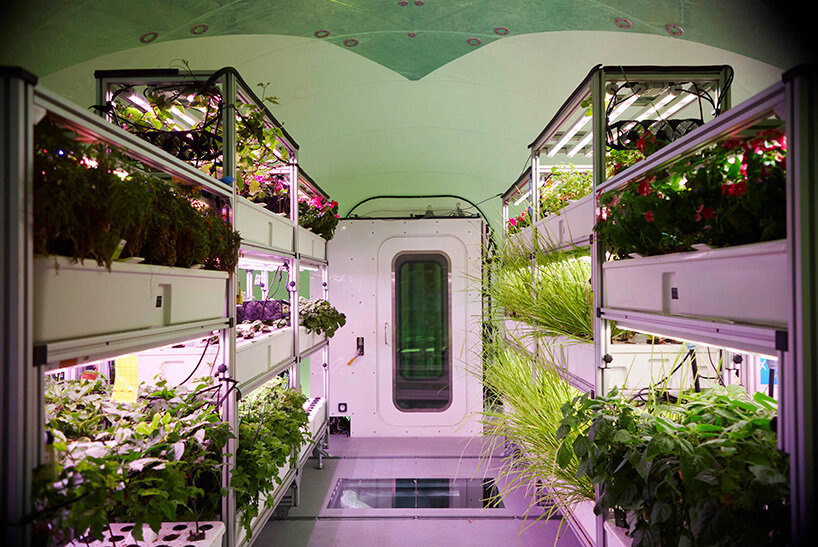
simulating biopod performance using simulia
The 3DEXPERIENCE platform enables the use of additional tools to further projects and, most importantly, validate design and engineering. SIMULIA is an engine that simulates physical world behaviors accurately.
‘Simulation is key, especially during early design phase to help reducing development time, reduce the cost of physical testing and reduce the risk of not meeting requirements and performances. SIMULIA is used for structural and fluidics analysis so that we can aid the product development, go back and forth between design engineering, simulation, and results, progressively refining specifications while using reliable feedbacks,’ continues the architect.
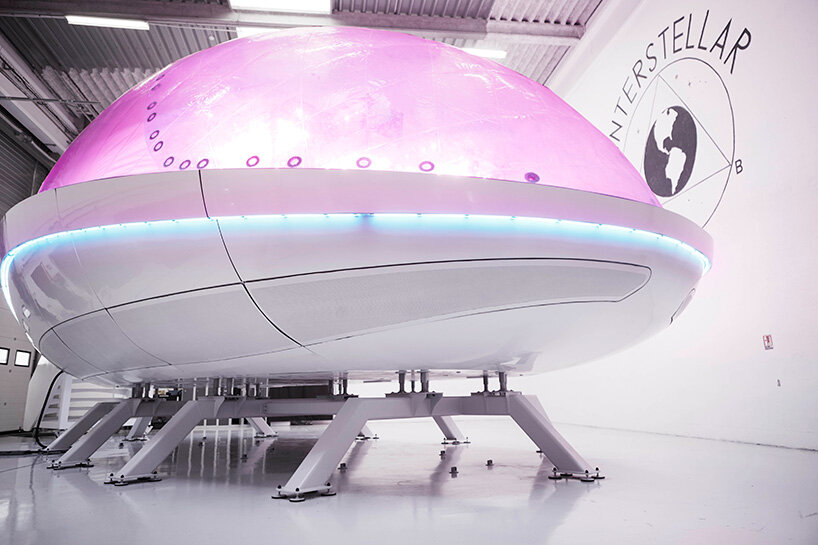
On a similar note, a virtual twin is a digital representation of a real-world physical product. A virtual twin can date, track, and control changes to the design as it evolves and improves. As living machines, BioPod virtual twins will gather data for everything from operations and maintenance through plant monitoring, phenotyping and environment monitoring. All the data will be assimilated for an accurate 3D and real-time representation that is crucial as Interstellar Lab bring BioPods to large-scale deployment.
‘Virtual twins of BioPods and future Interstellar Lab products, whether they are meant for design, manufacturing, operation or maintenance phases, represent a huge potential, from internal processes improvement, to quality control and performances optimization. That’s a major strategic aspect we want to keep exploring with 3DEXPERIENCE tools,’ adds Jim.
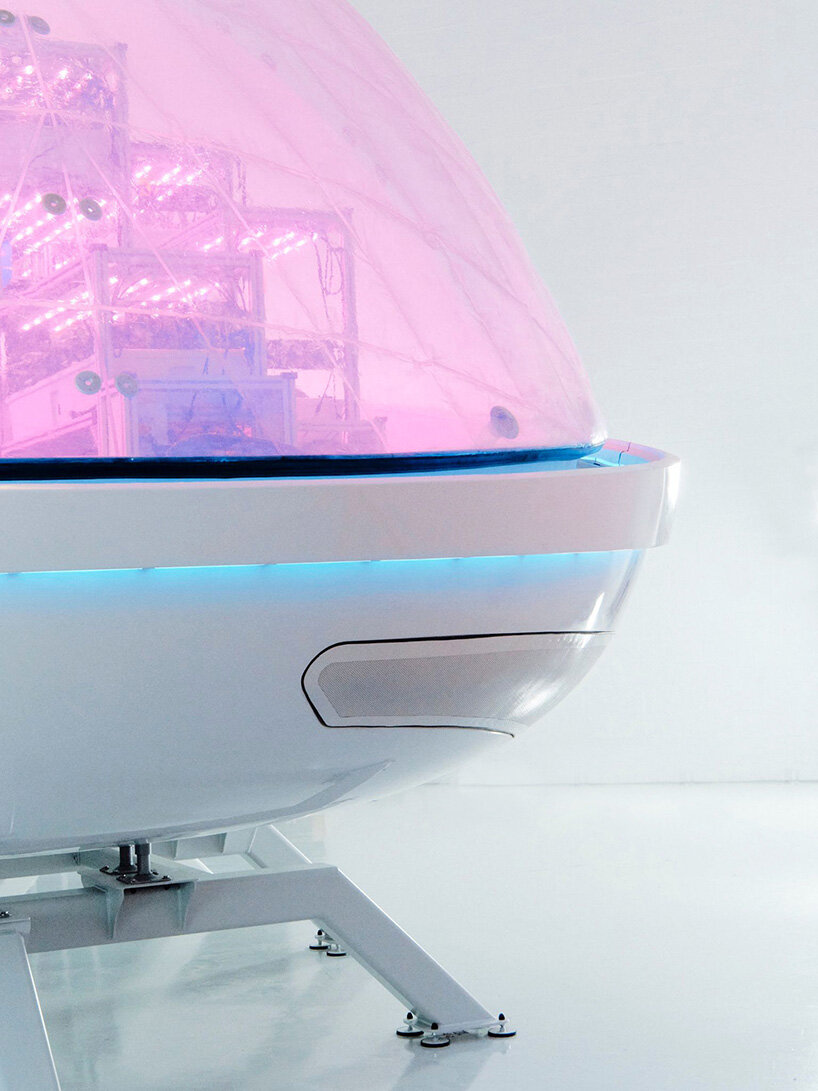
Interstellar Lab finalized its first BioPod design phase in early 2022, and Dassault Systemes tools were vital to aiding creatives and engineers in realizing its design for manufacturing and assembly in a very short time. The first 1:1 BioPod was completed in September 2022, and now in test and experimentation phase for Earth applications. As data is progressively gathered from all sensors used to monitor BioPod behaviours and parameters, simulations will be refined and made even more accurate, so that future iterations can be easily expanded on the platform. The self-sustainable BioPod does not feel like a moonshot anymore; it is now a reality.
‘We manufactured the final sections of the first BioPod for Earth last summer. The aim was for these large-scale components to be assembled very quickly, to be able to keep up with our planning and deliver like planned, early September 2022. That is confirming our need to integrate the whole process for manufacturing and assembly’ concludes Jim Rhoné, Chief Product Officer at Interstellar Lab.
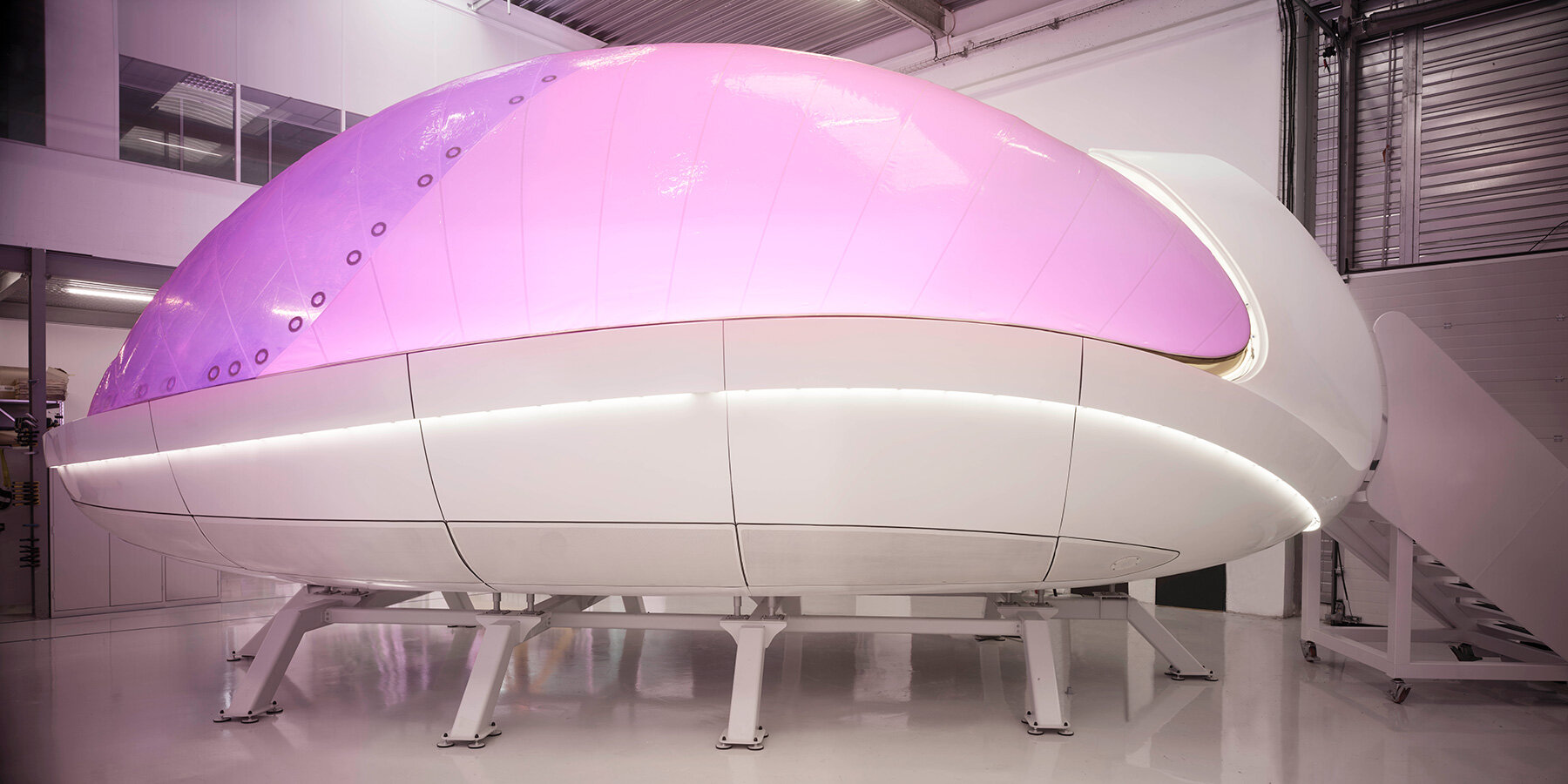
company: Interstellar Lab
case studies: Experimental Bio-Regenerative stations (Ebios) and BioPod
developers: Dassault Systemes
platform: 3DEXPERIENCE platform on the cloud
dassault systemes (21)
space travel design (100)
PRODUCT LIBRARY
a diverse digital database that acts as a valuable guide in gaining insight and information about a product directly from the manufacturer, and serves as a rich reference point in developing a project or scheme.


